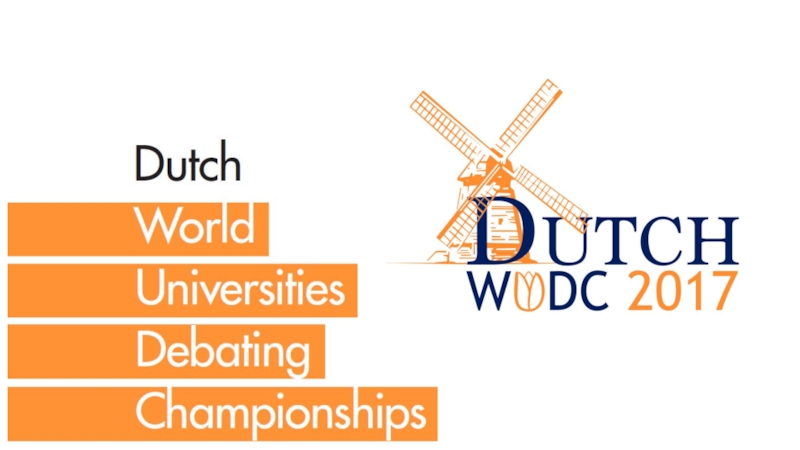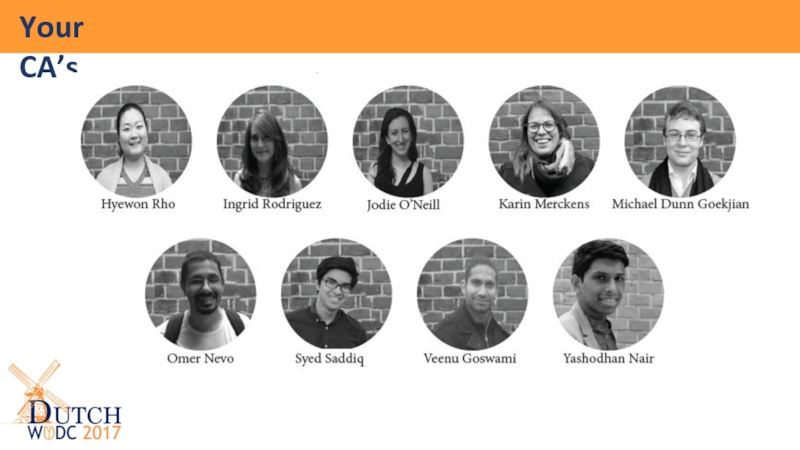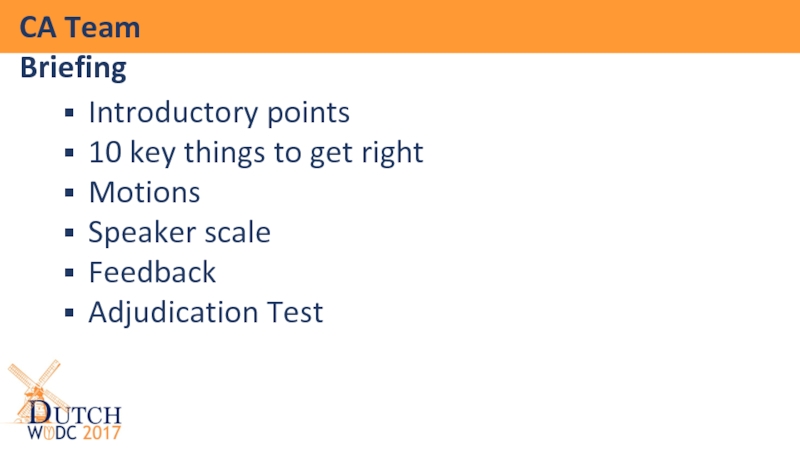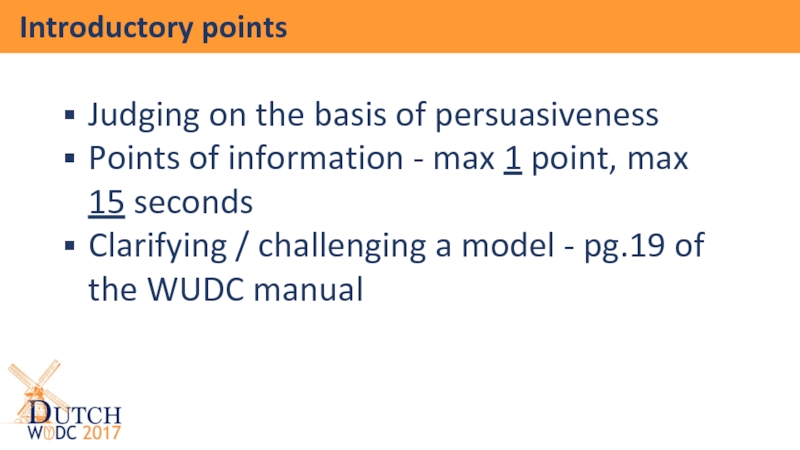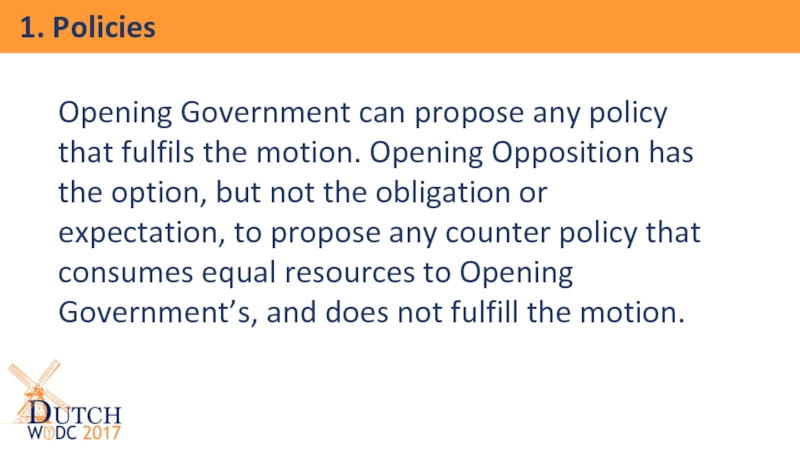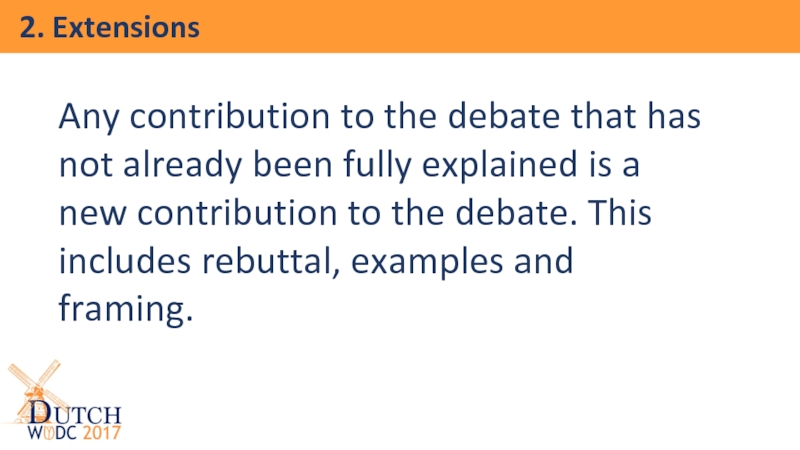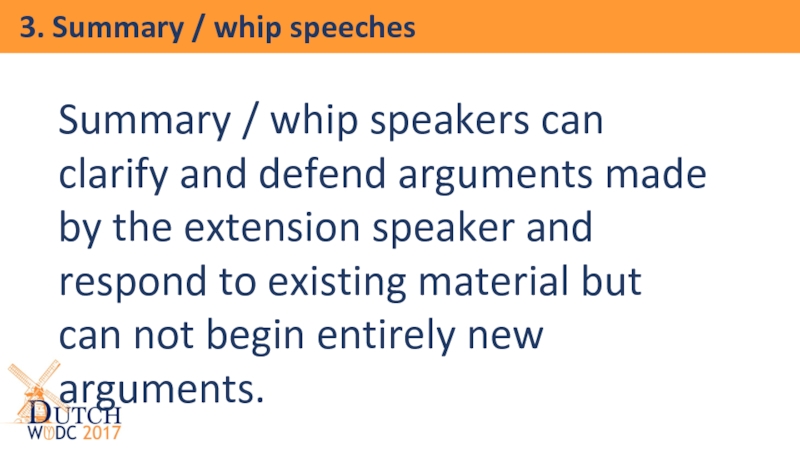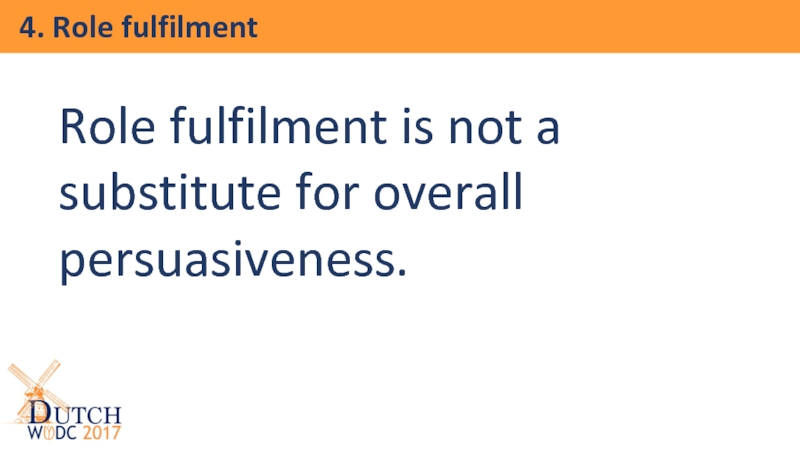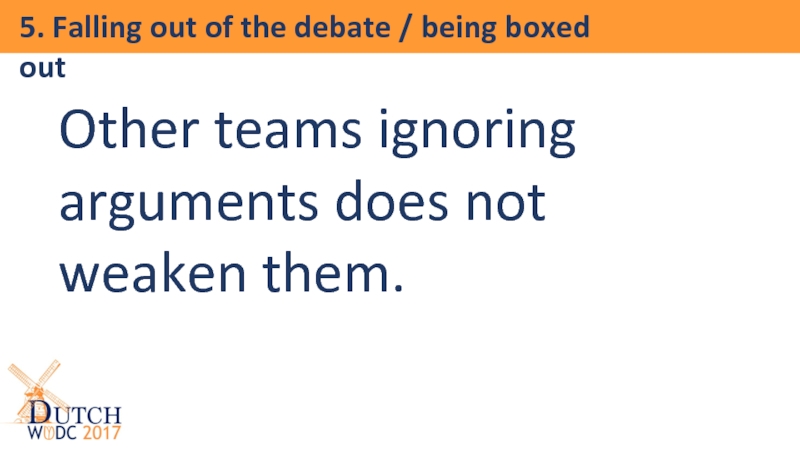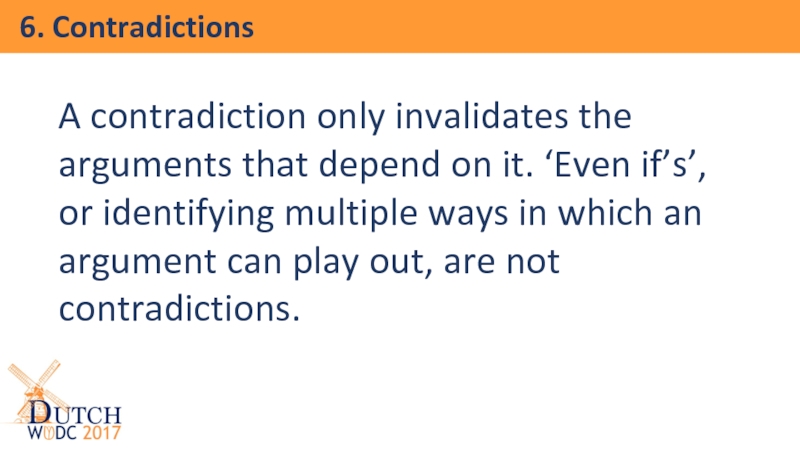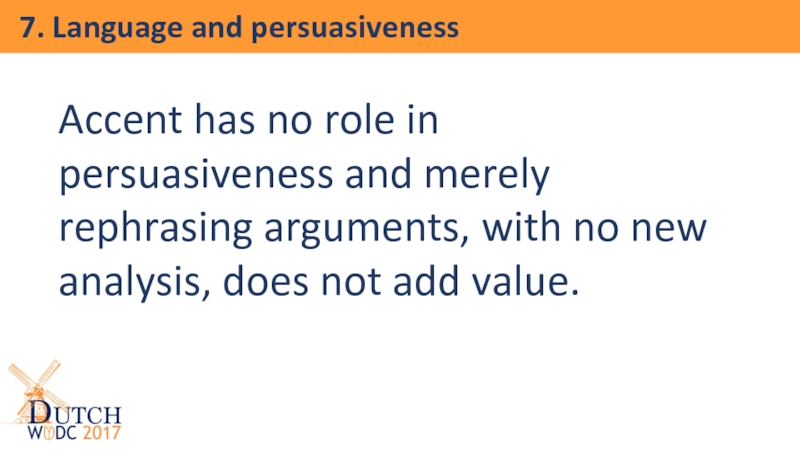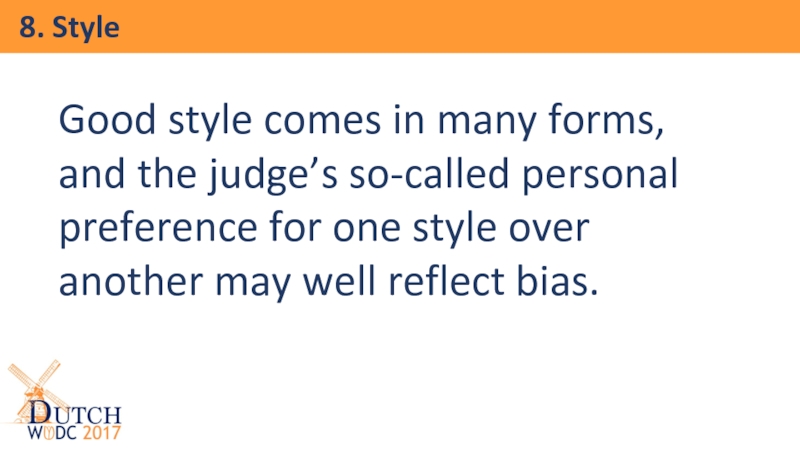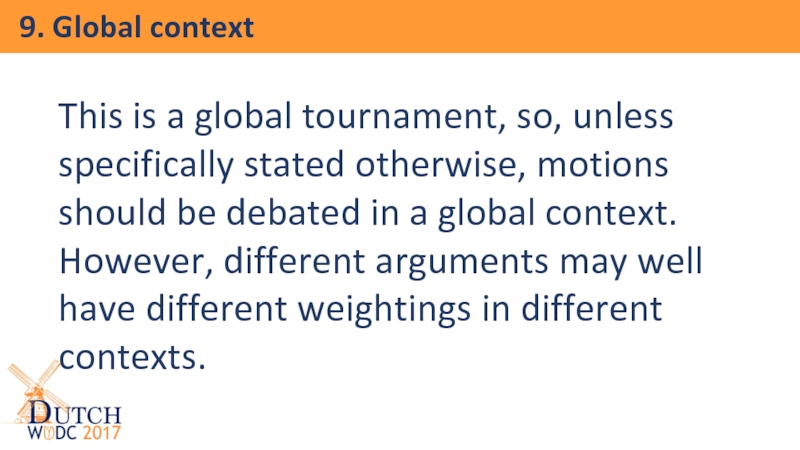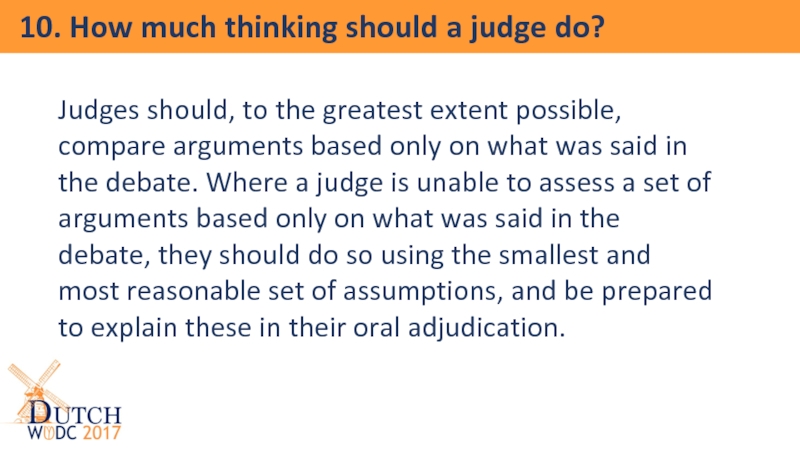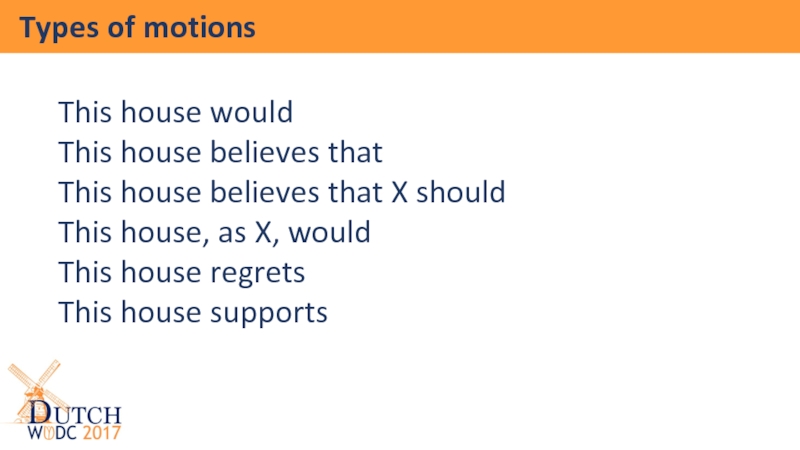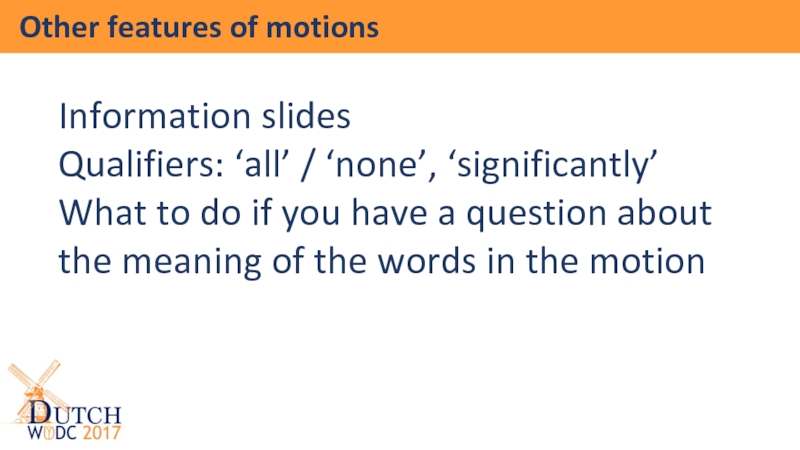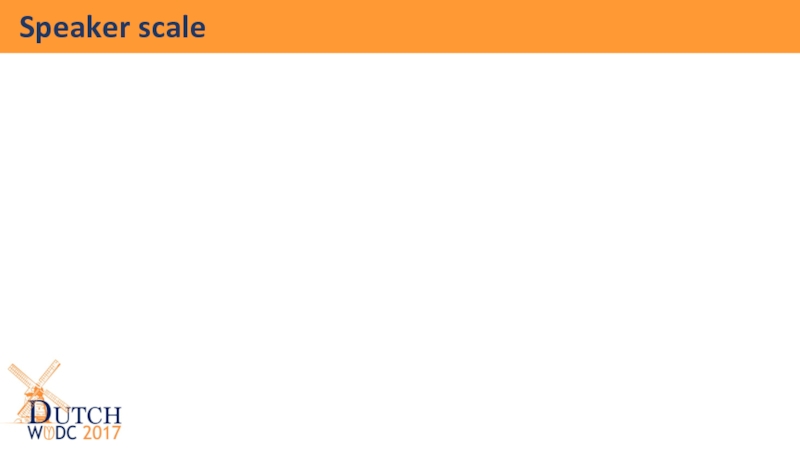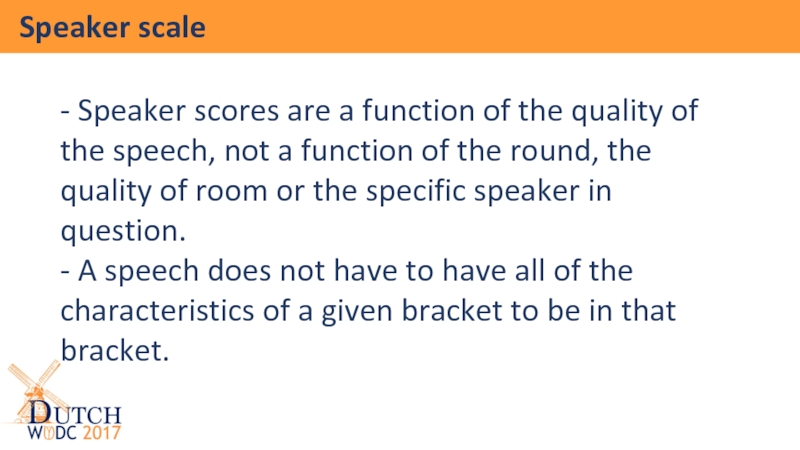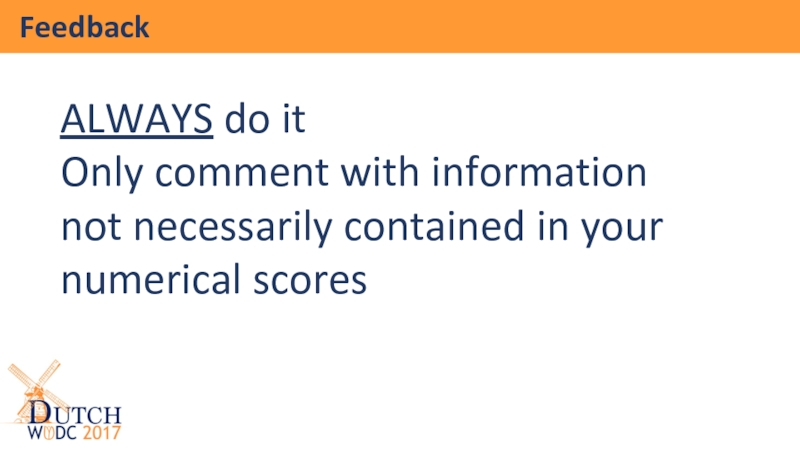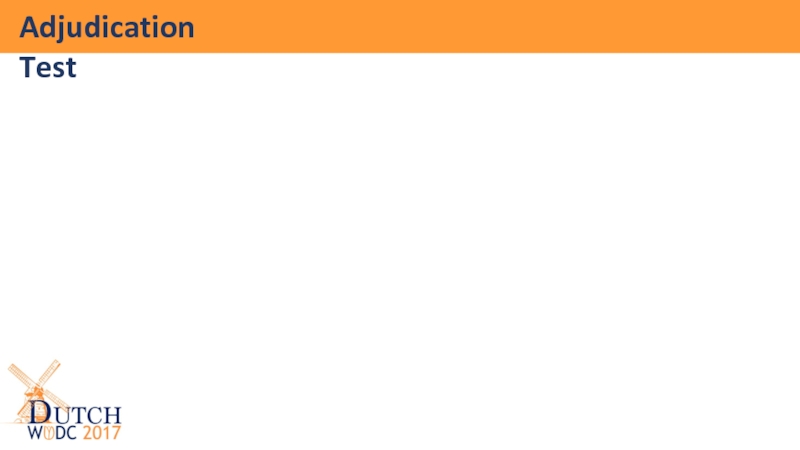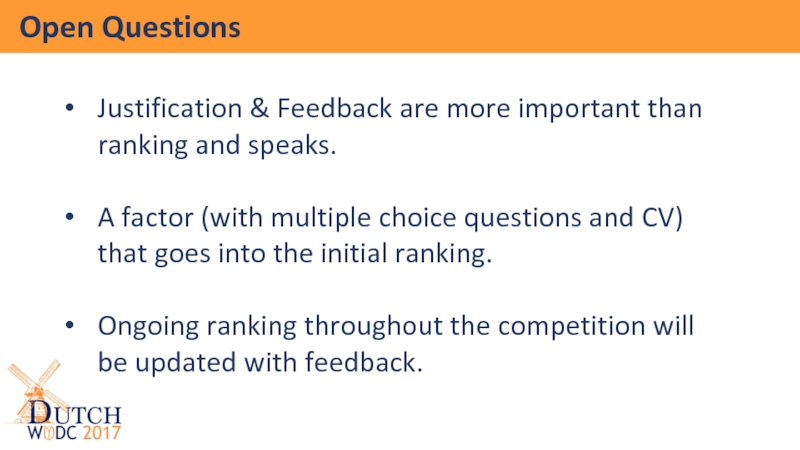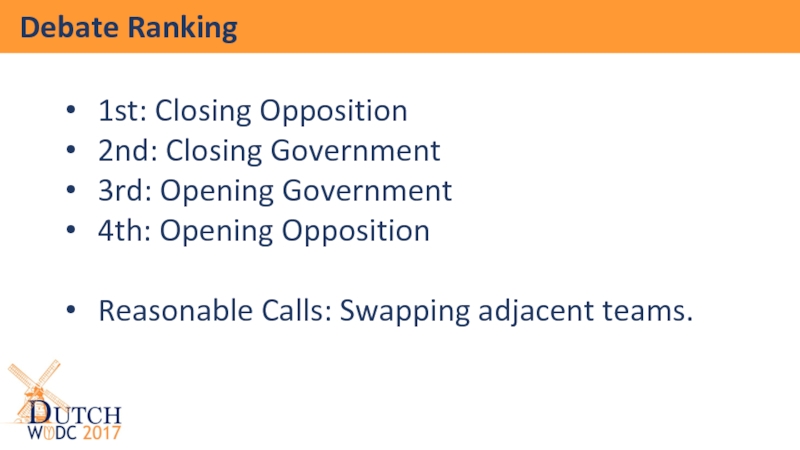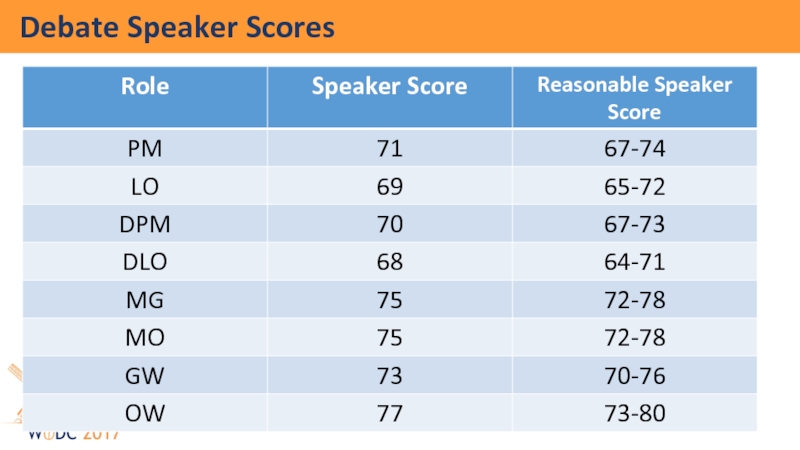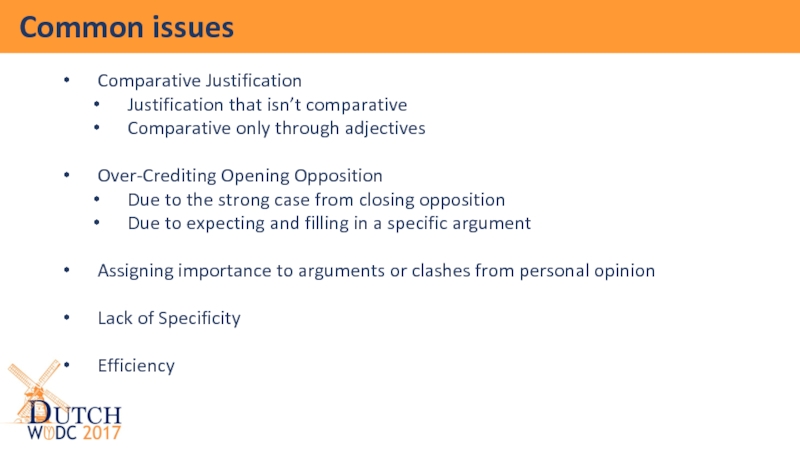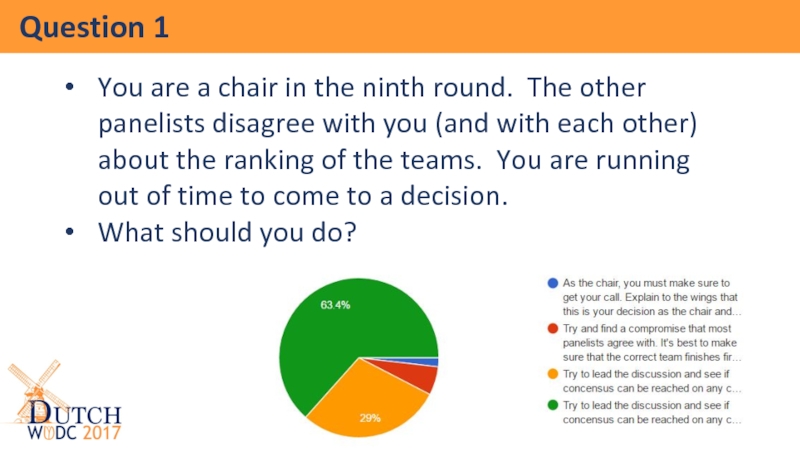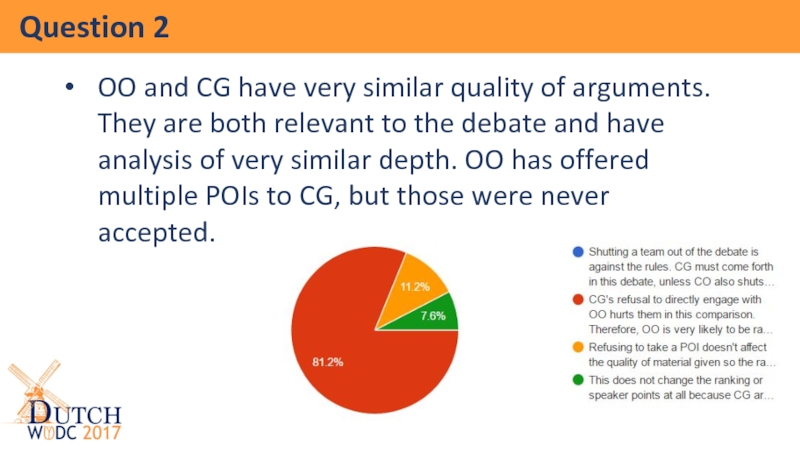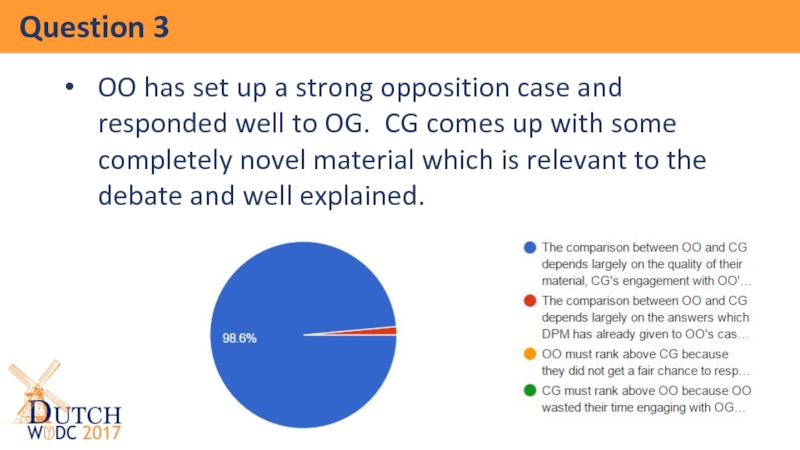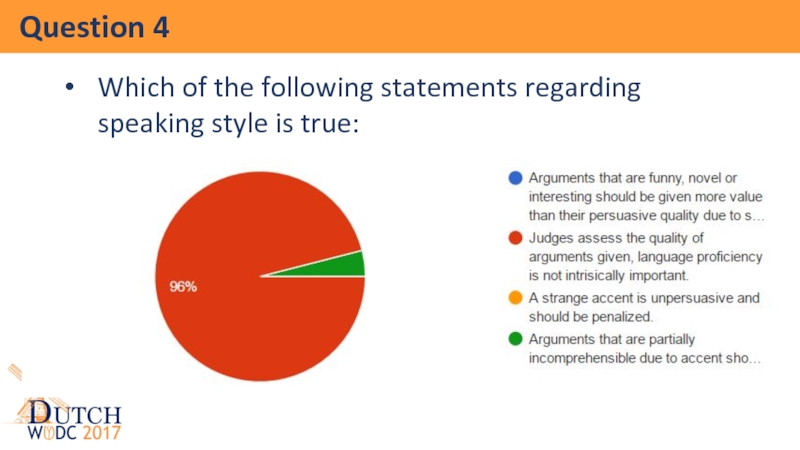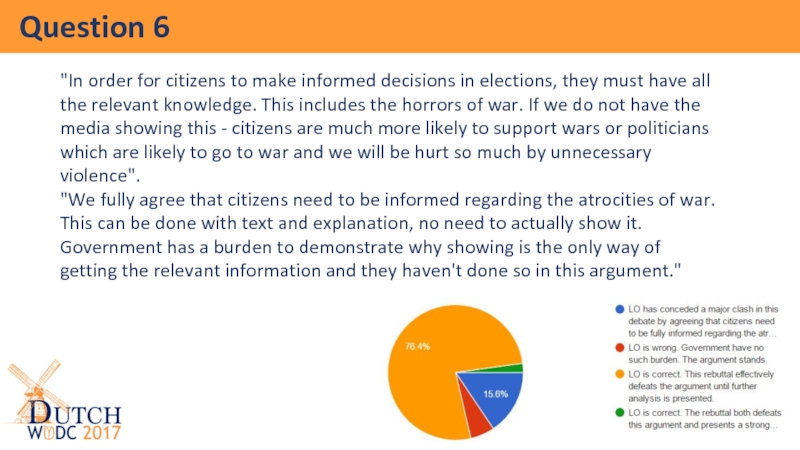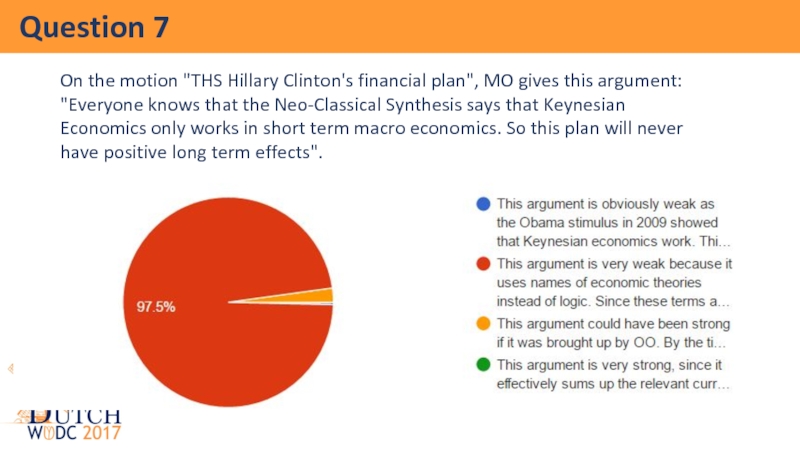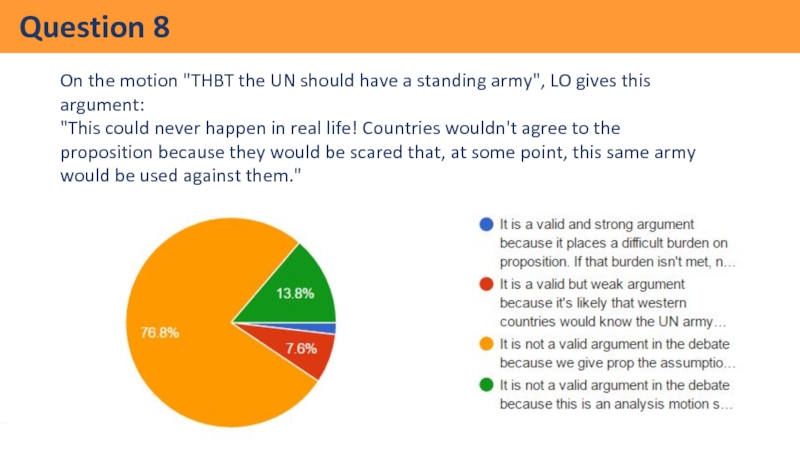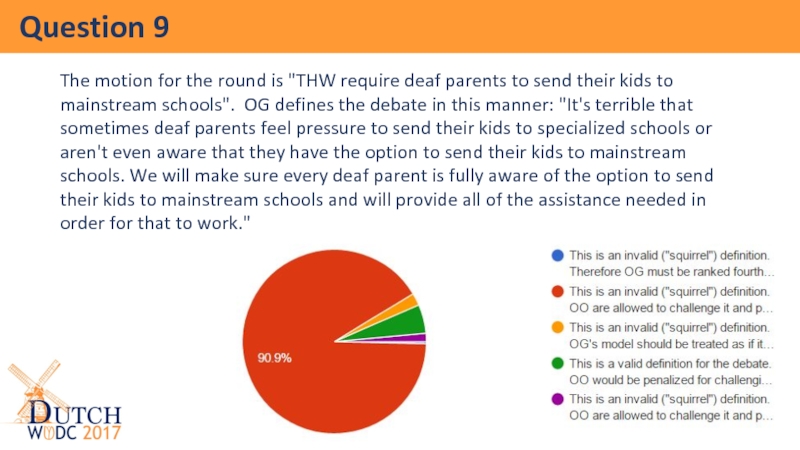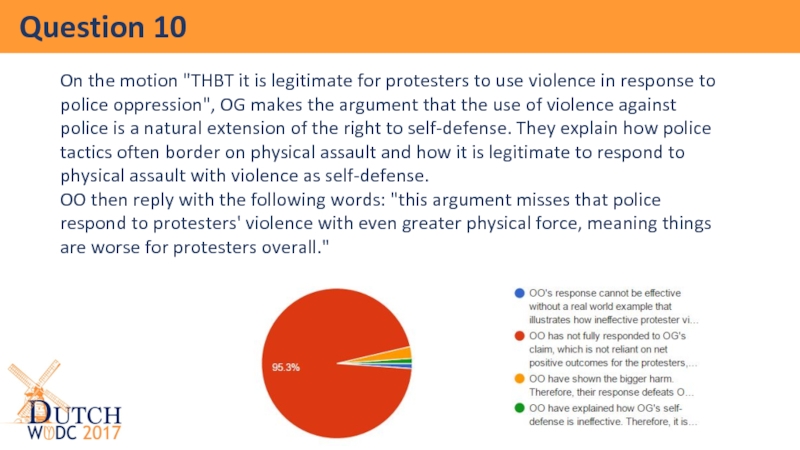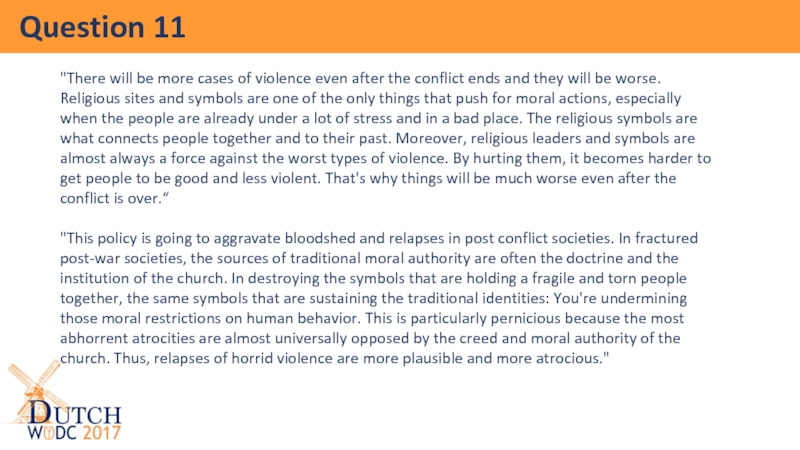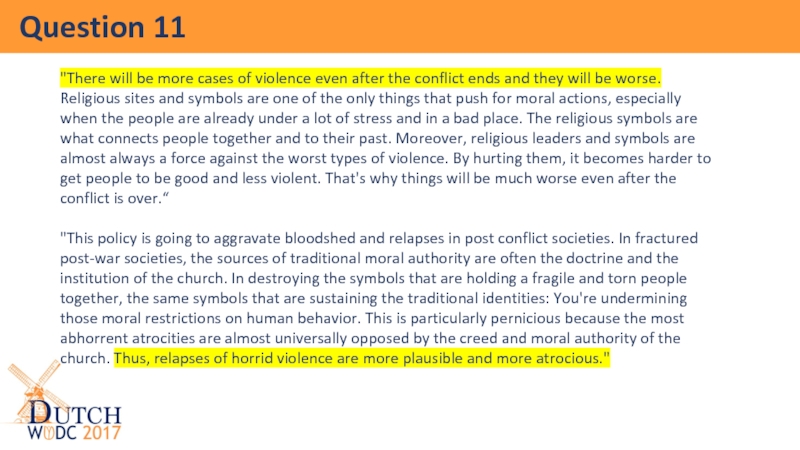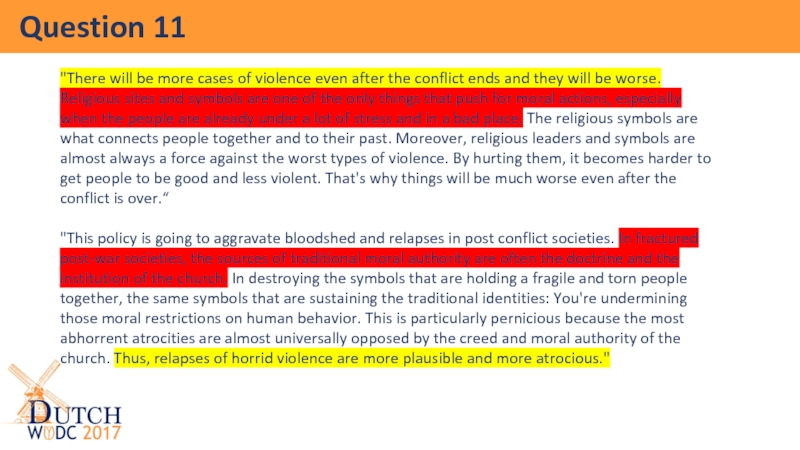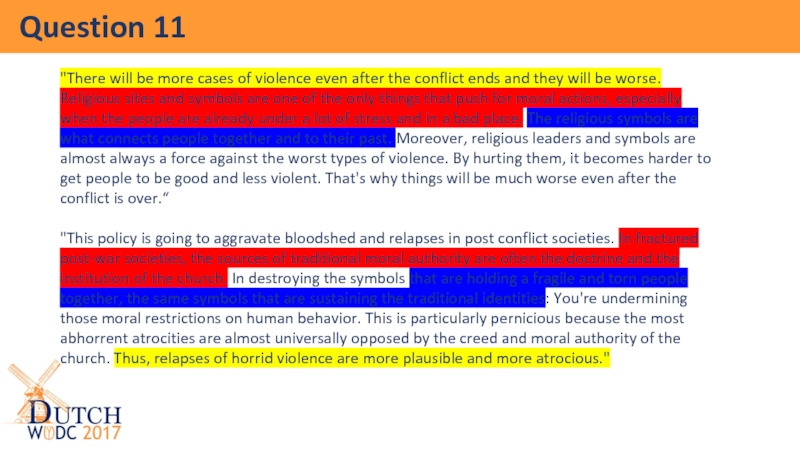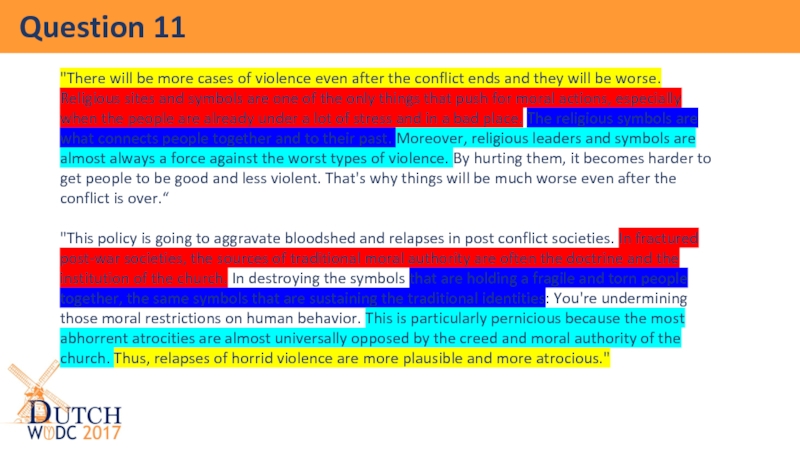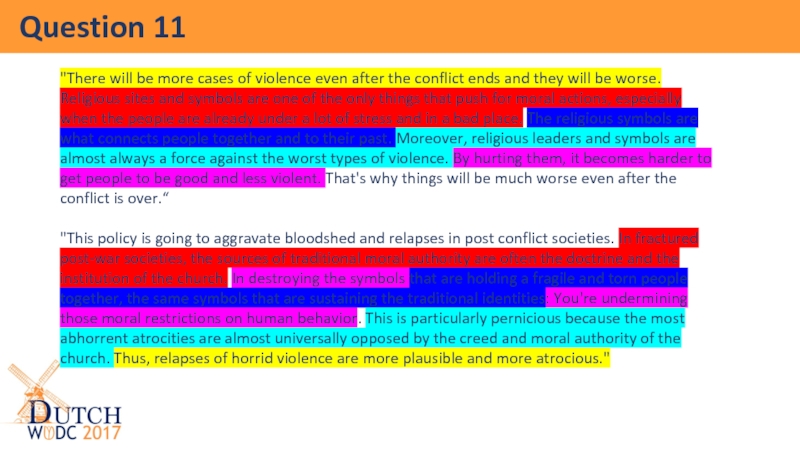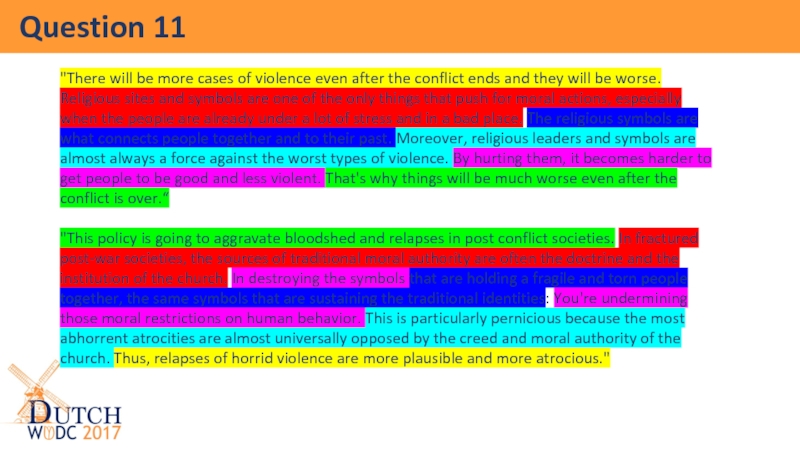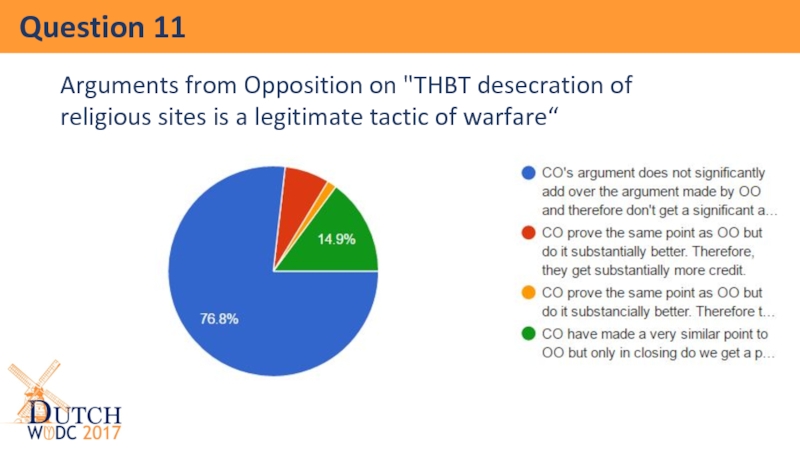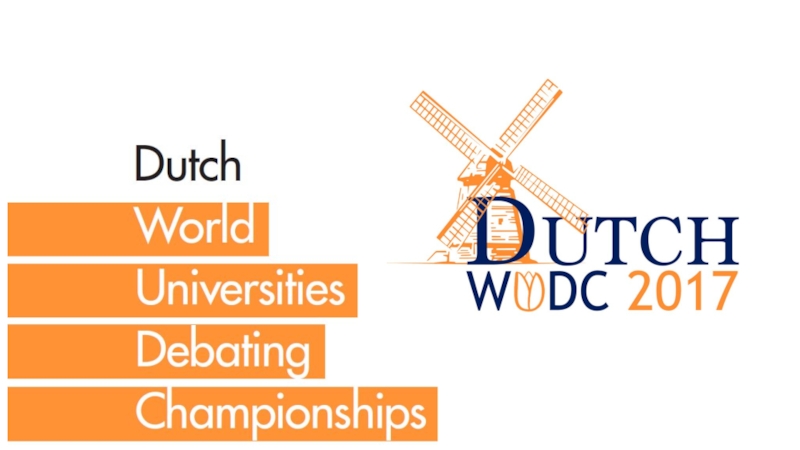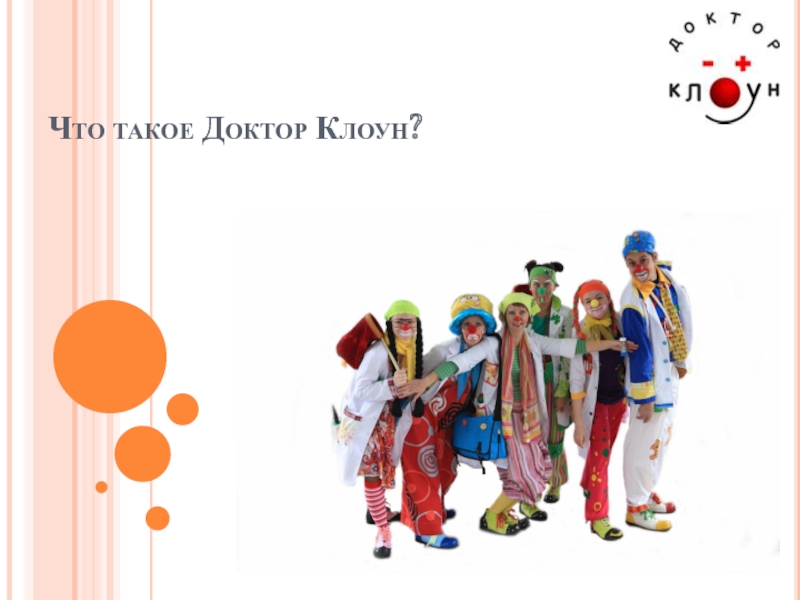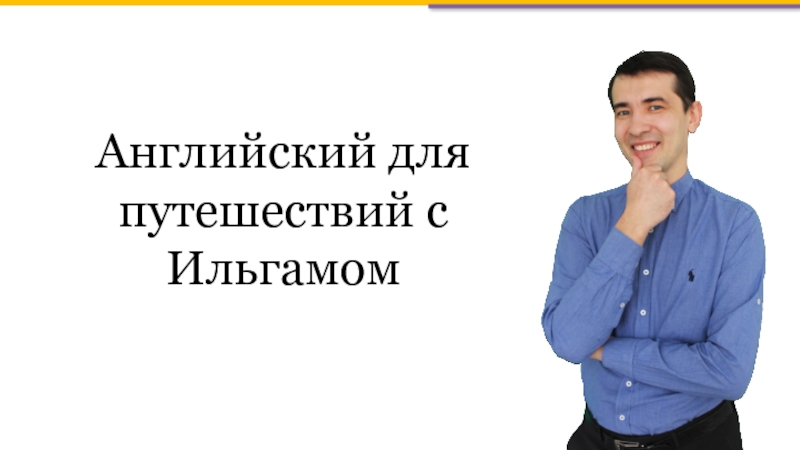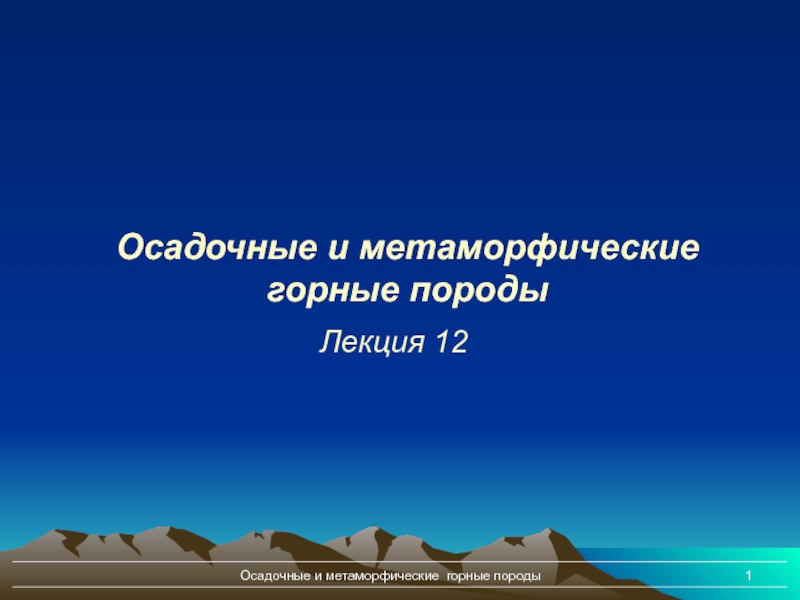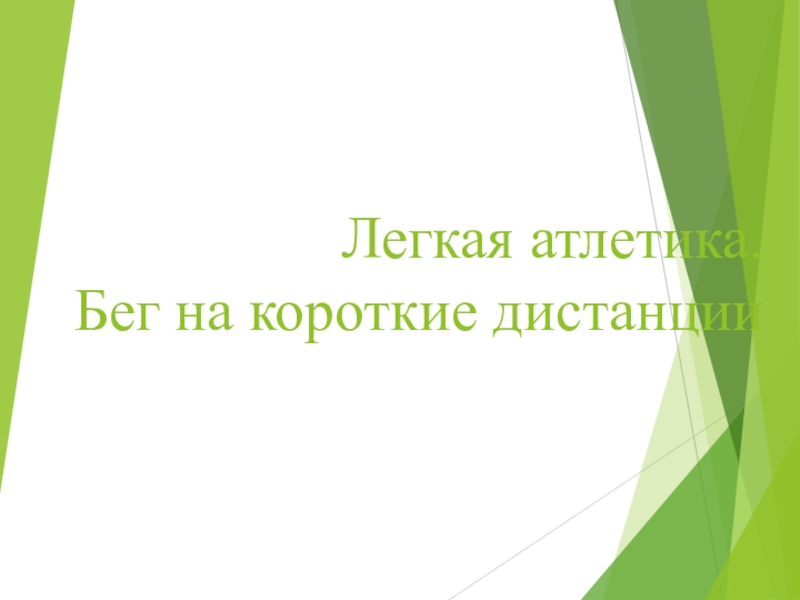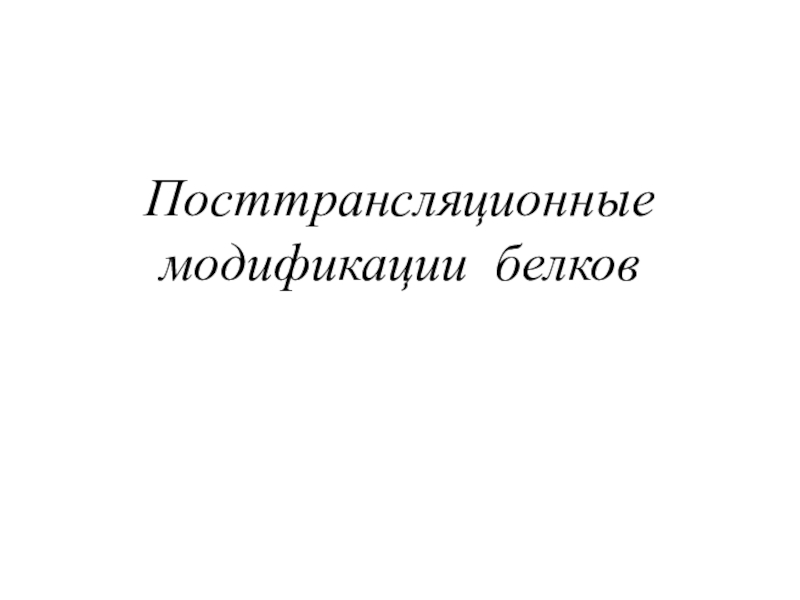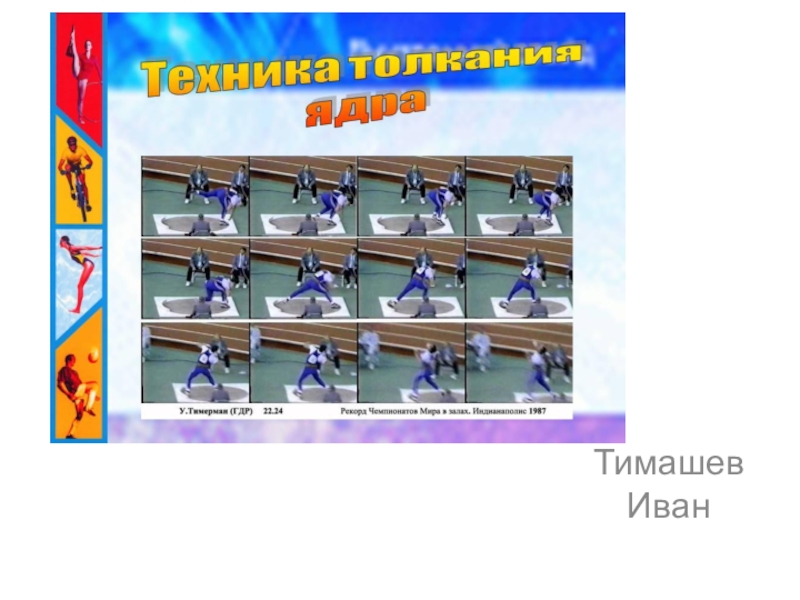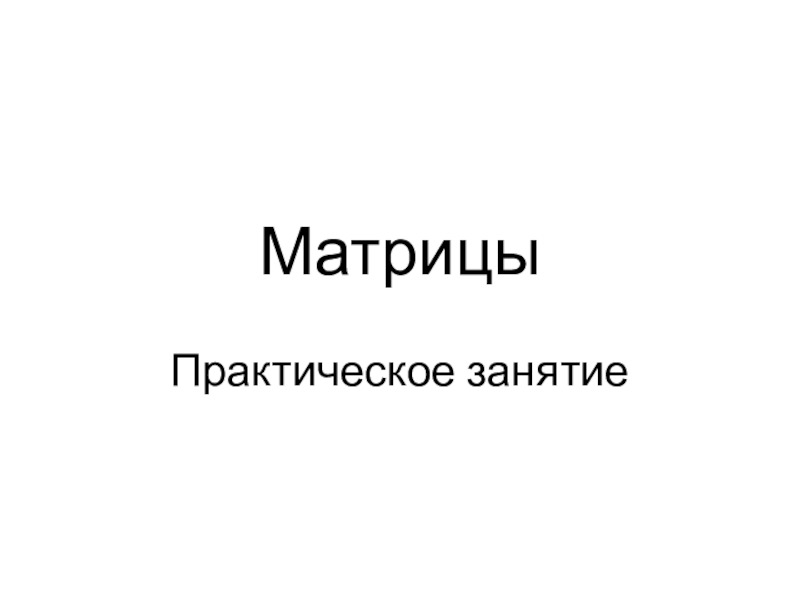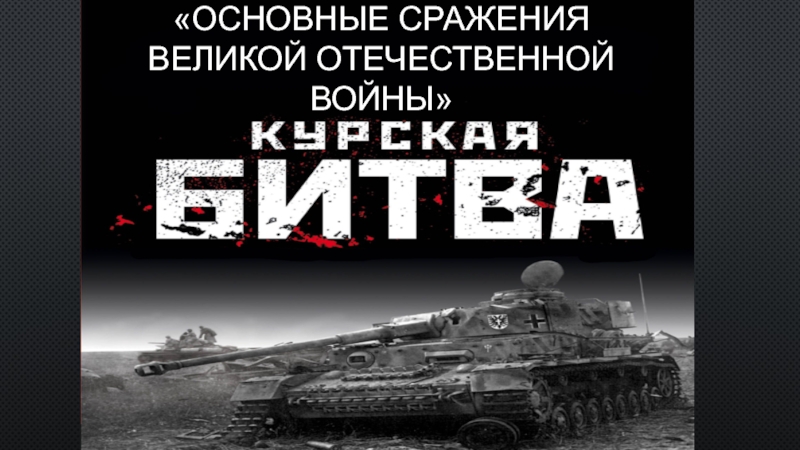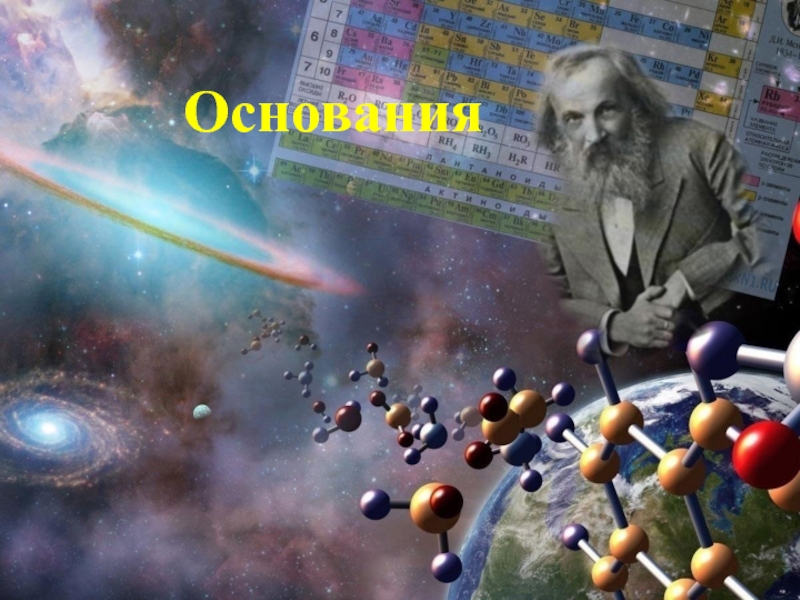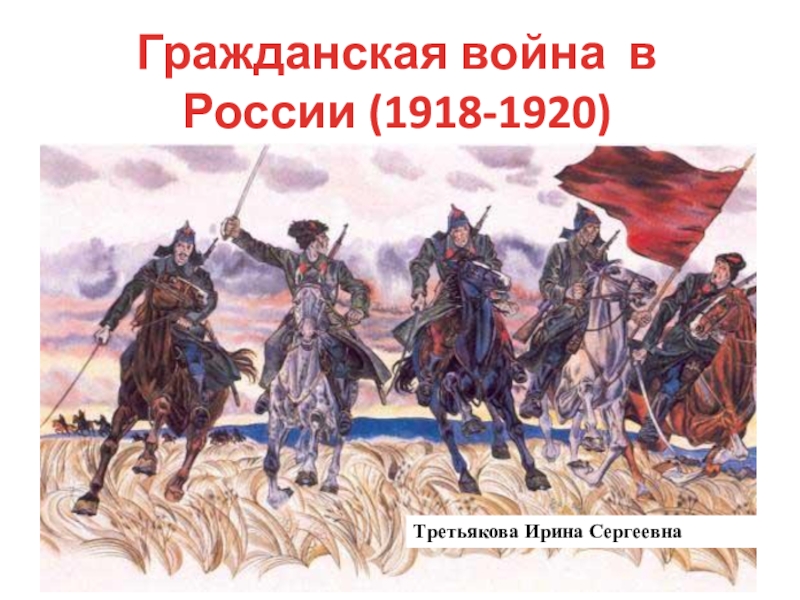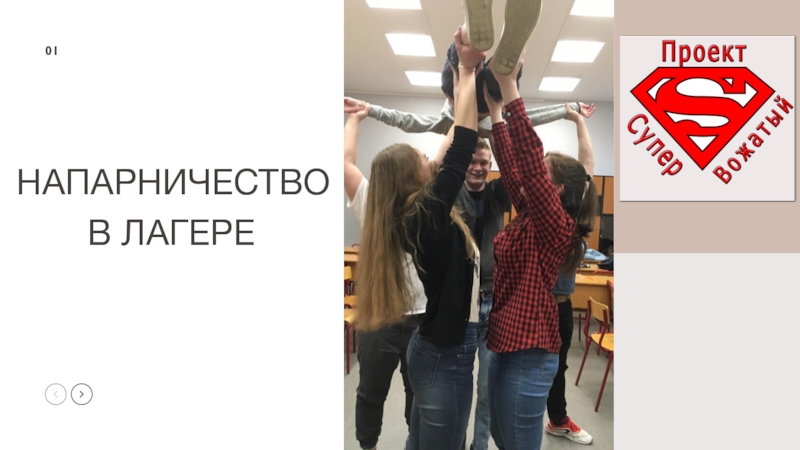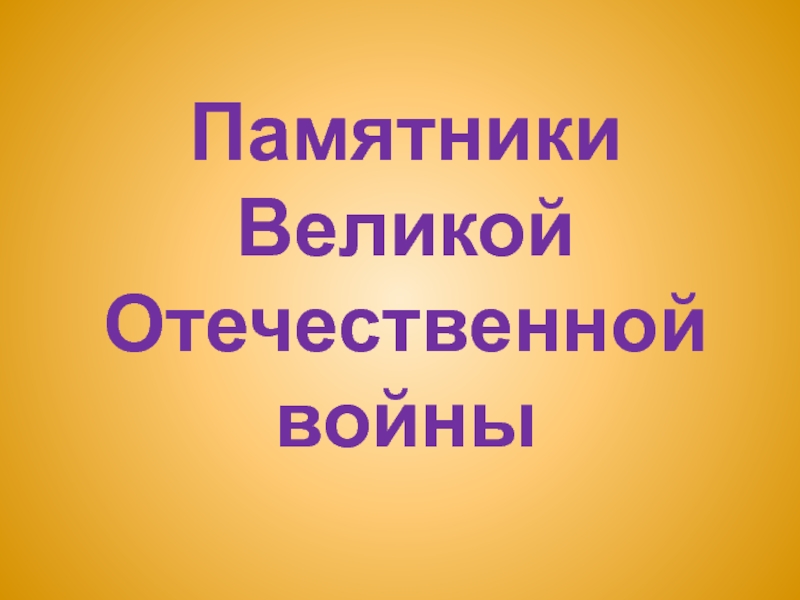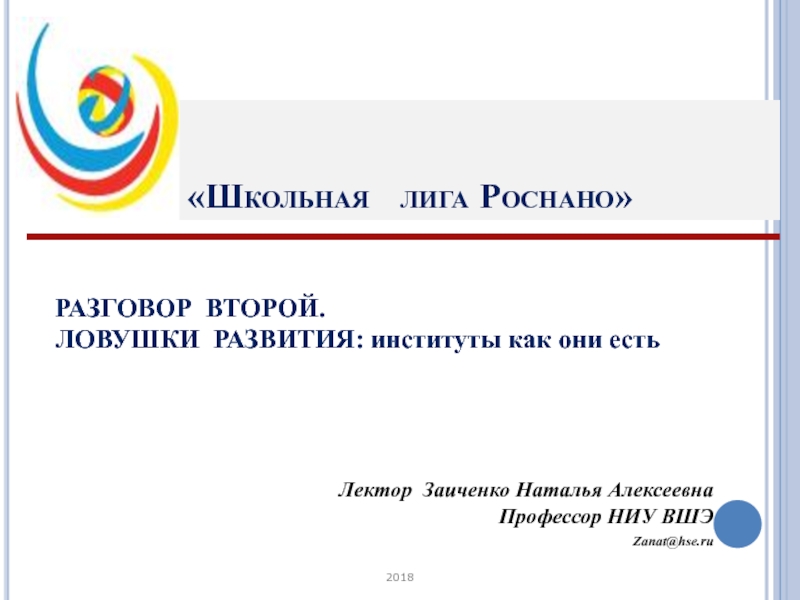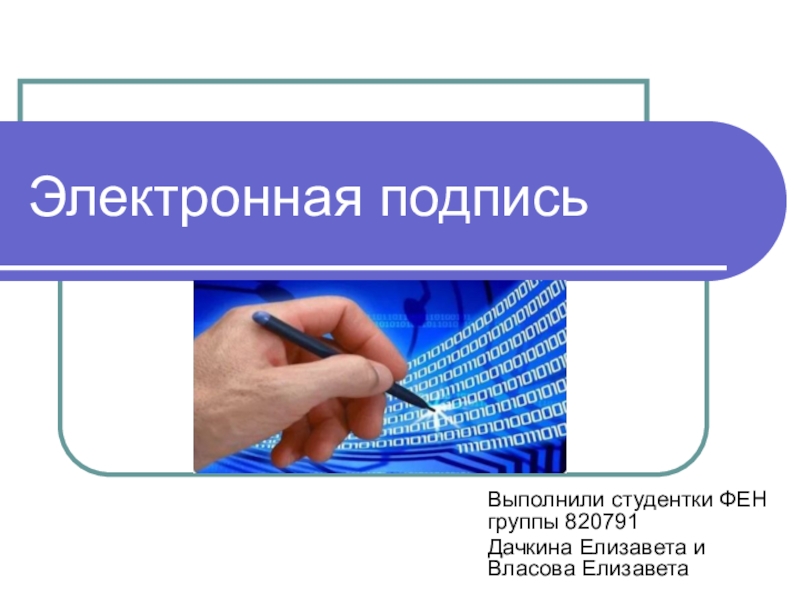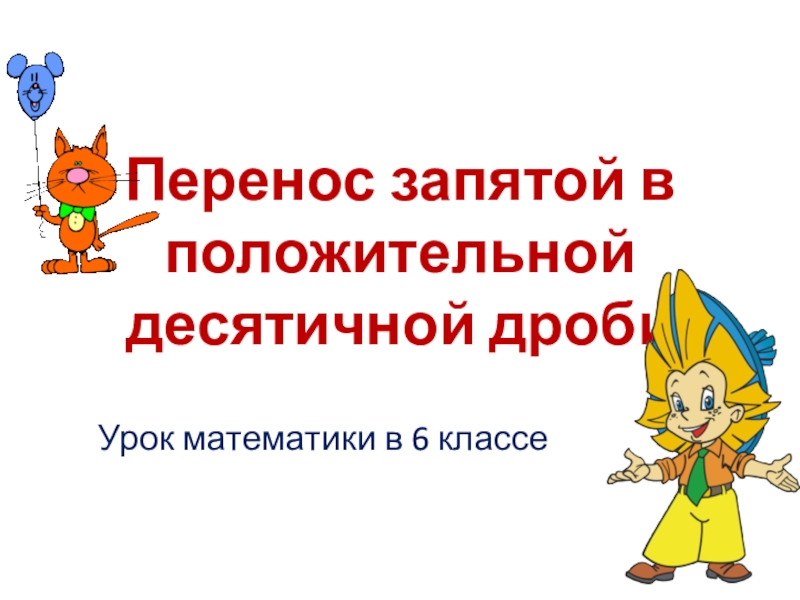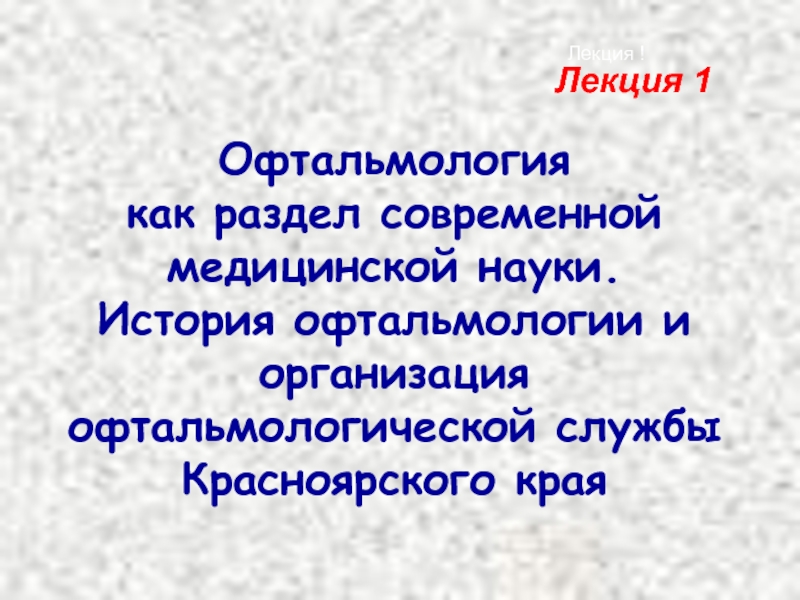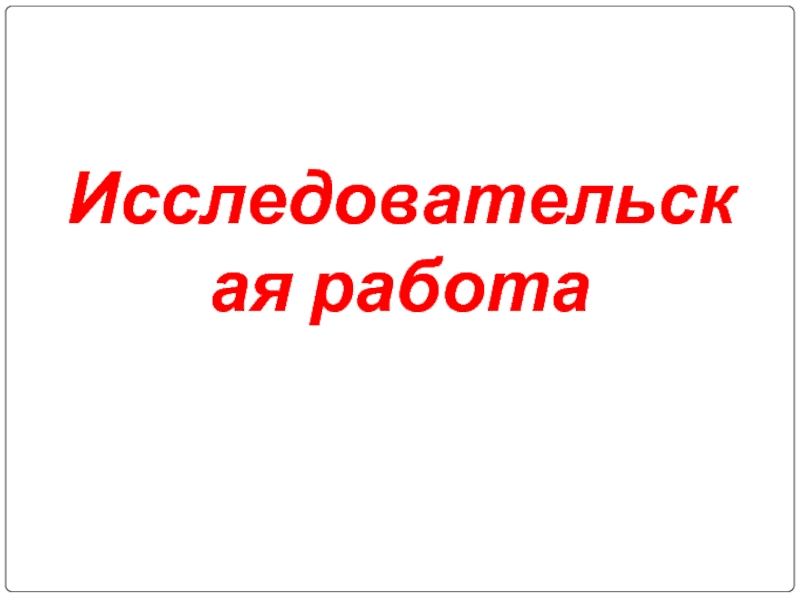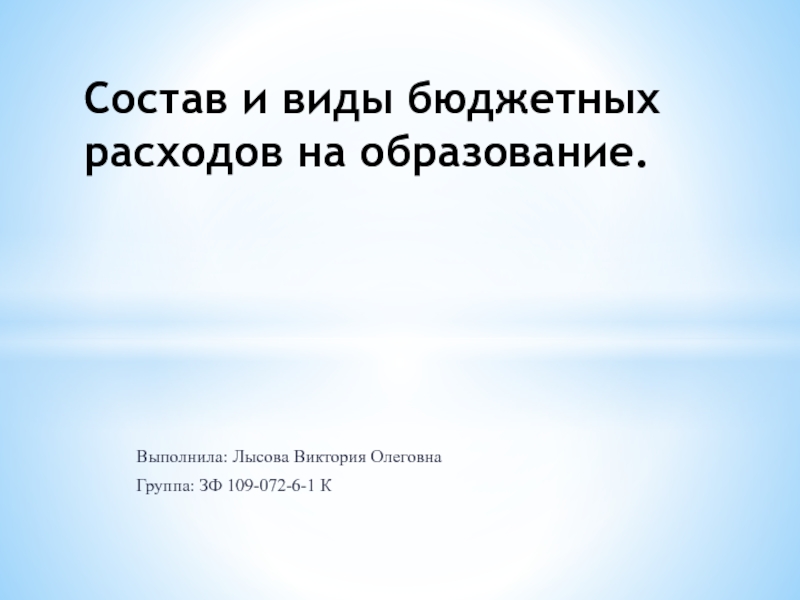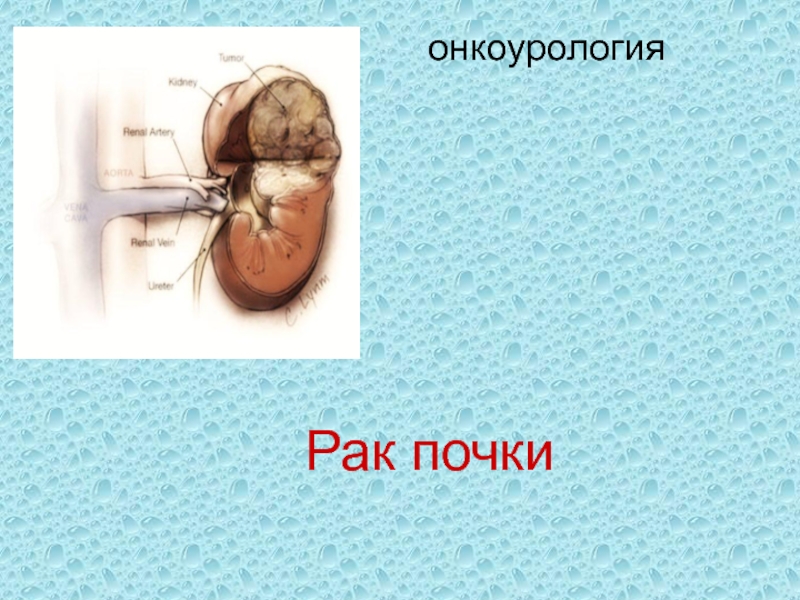Разделы презентаций
- Разное
- Английский язык
- Астрономия
- Алгебра
- Биология
- География
- Геометрия
- Детские презентации
- Информатика
- История
- Литература
- Математика
- Медицина
- Менеджмент
- Музыка
- МХК
- Немецкий язык
- ОБЖ
- Обществознание
- Окружающий мир
- Педагогика
- Русский язык
- Технология
- Физика
- Философия
- Химия
- Шаблоны, картинки для презентаций
- Экология
- Экономика
- Юриспруденция
Dutch-WUDC-CA-Team-Briefing
Содержание
- 1. Dutch-WUDC-CA-Team-Briefing
- 2. Your CA’s
- 3. CA Team BriefingIntroductory points10 key things to get rightMotionsSpeaker scaleFeedbackAdjudication Test
- 4. Introductory pointsJudging on the basis of persuasivenessPoints
- 5. 10 Key things to get right
- 6. 1. PoliciesOpening Government can propose any policy
- 7. 2. ExtensionsAny contribution to the debate that
- 8. 3. Summary / whip speechesSummary / whip
- 9. 4. Role fulfilmentRole fulfilment is not a substitute for overall persuasiveness.
- 10. 5. Falling out of the debate /
- 11. 6. ContradictionsA contradiction only invalidates the arguments
- 12. 7. Language and persuasivenessAccent has no role
- 13. 8. StyleGood style comes in many forms,
- 14. 9. Global contextThis is a global tournament,
- 15. 10. How much thinking should a judge
- 16. Motions
- 17. Types of motionsThis house wouldThis house believes
- 18. Other features of motionsInformation slidesQualifiers: ‘all’ /
- 19. Speaker scale
- 20. Speaker scale- Speaker scores are a function
- 21. Feedback
- 22. FeedbackALWAYS do itOnly comment with information not necessarily contained in your numerical scores
- 23. Adjudication Test
- 24. Open Questions Justification & Feedback are more important
- 25. Debate Ranking1st: Closing Opposition2nd: Closing Government3rd: Opening Government4th: Opening OppositionReasonable Calls: Swapping adjacent teams.
- 26. Debate Speaker Scores
- 27. Common issuesComparative JustificationJustification that isn’t comparativeComparative only
- 28. Question 1You are a chair in the
- 29. Question 2OO and CG have very similar
- 30. Question 3OO has set up a strong
- 31. Question 4Which of the following statements regarding speaking style is true:
- 32. Question 5OG's case is defeated by OO.
- 33. Question 6"In order for citizens to make
- 34. Question 7On the motion "THS Hillary Clinton's
- 35. Question 8On the motion "THBT the UN
- 36. Question 9The motion for the round is
- 37. Question 10On the motion "THBT it is
- 38. Question 11"There will be more cases of
- 39. Question 11"There will be more cases of
- 40. Question 11"There will be more cases of
- 41. Question 11"There will be more cases of
- 42. Question 11"There will be more cases of
- 43. Question 11"There will be more cases of
- 44. Question 11"There will be more cases of
- 45. Question 11Arguments from Opposition on "THBT desecration of religious sites is a legitimate tactic of warfare“
- 46. Слайд 46
- 47. Скачать презентанцию
Your CA’s
Слайды и текст этой презентации
Слайд 3CA Team Briefing
Introductory points
10 key things to get right
Motions
Speaker scale
Feedback
Adjudication
Test
Слайд 4Introductory points
Judging on the basis of persuasiveness
Points of information -
max 1 point, max 15 seconds
Clarifying / challenging a model
- pg.19 of the WUDC manualСлайд 61. Policies
Opening Government can propose any policy that fulfils the
motion. Opening Opposition has the option, but not the obligation
or expectation, to propose any counter policy that consumes equal resources to Opening Government’s, and does not fulfill the motion.Слайд 72. Extensions
Any contribution to the debate that has not already
been fully explained is a new contribution to the debate.
This includes rebuttal, examples and framing.Слайд 83. Summary / whip speeches
Summary / whip speakers can clarify
and defend arguments made by the extension speaker and respond
to existing material but can not begin entirely new arguments.Слайд 105. Falling out of the debate / being boxed out
Other
teams ignoring arguments does not weaken them.
Слайд 116. Contradictions
A contradiction only invalidates the arguments that depend on
it. ‘Even if’s’, or identifying multiple ways in which an
argument can play out, are not contradictions.Слайд 127. Language and persuasiveness
Accent has no role in persuasiveness and
merely rephrasing arguments, with no new analysis, does not add
value.Слайд 138. Style
Good style comes in many forms, and the judge’s
so-called personal preference for one style over another may well
reflect bias.Слайд 149. Global context
This is a global tournament, so, unless specifically
stated otherwise, motions should be debated in a global context.
However, different arguments may well have different weightings in different contexts.Слайд 1510. How much thinking should a judge do?
Judges should, to
the greatest extent possible, compare arguments based only on what
was said in the debate. Where a judge is unable to assess a set of arguments based only on what was said in the debate, they should do so using the smallest and most reasonable set of assumptions, and be prepared to explain these in their oral adjudication.Слайд 17Types of motions
This house would
This house believes that
This house believes
that X should
This house, as X, would
This house regrets
This house
supportsСлайд 18Other features of motions
Information slides
Qualifiers: ‘all’ / ‘none’, ‘significantly’
What to
do if you have a question about the meaning of
the words in the motionСлайд 20Speaker scale
- Speaker scores are a function of the quality
of the speech, not a function of the round, the
quality of room or the specific speaker in question.- A speech does not have to have all of the characteristics of a given bracket to be in that bracket.
Слайд 22Feedback
ALWAYS do it
Only comment with information not necessarily contained in
your numerical scores
Слайд 24Open Questions
Justification & Feedback are more important than ranking and
speaks.
A factor (with multiple choice questions and CV) that goes
into the initial ranking.Ongoing ranking throughout the competition will be updated with feedback.
Слайд 25Debate Ranking
1st: Closing Opposition
2nd: Closing Government
3rd: Opening Government
4th: Opening Opposition
Reasonable
Calls: Swapping adjacent teams.
Слайд 27Common issues
Comparative Justification
Justification that isn’t comparative
Comparative only through adjectives
Over-Crediting Opening
Opposition
Due to the strong case from closing opposition
Due to expecting
and filling in a specific argumentAssigning importance to arguments or clashes from personal opinion
Lack of Specificity
Efficiency
Слайд 28Question 1
You are a chair in the ninth round. The
other panelists disagree with you (and with each other) about
the ranking of the teams. You are running out of time to come to a decision.What should you do?
Слайд 29Question 2
OO and CG have very similar quality of arguments.
They are both relevant to the debate and have analysis
of very similar depth. OO has offered multiple POIs to CG, but those were never accepted.Слайд 30Question 3
OO has set up a strong opposition case and
responded well to OG. CG comes up with some completely
novel material which is relevant to the debate and well explained.Слайд 32Question 5
OG's case is defeated by OO. CG has no
constructive extension, but provides a number of new responses that
are sufficient to beat OO.Which of the following is true of the rankings of these three teams?
Слайд 33Question 6
"In order for citizens to make informed decisions in
elections, they must have all the relevant knowledge. This includes
the horrors of war. If we do not have the media showing this - citizens are much more likely to support wars or politicians which are likely to go to war and we will be hurt so much by unnecessary violence"."We fully agree that citizens need to be informed regarding the atrocities of war. This can be done with text and explanation, no need to actually show it. Government has a burden to demonstrate why showing is the only way of getting the relevant information and they haven't done so in this argument."
Слайд 34Question 7
On the motion "THS Hillary Clinton's financial plan", MO
gives this argument:
"Everyone knows that the Neo-Classical Synthesis says that
Keynesian Economics only works in short term macro economics. So this plan will never have positive long term effects".Слайд 35Question 8
On the motion "THBT the UN should have a
standing army", LO gives this argument:
"This could never happen in
real life! Countries wouldn't agree to the proposition because they would be scared that, at some point, this same army would be used against them."Слайд 36Question 9
The motion for the round is "THW require deaf
parents to send their kids to mainstream schools". OG defines
the debate in this manner: "It's terrible that sometimes deaf parents feel pressure to send their kids to specialized schools or aren't even aware that they have the option to send their kids to mainstream schools. We will make sure every deaf parent is fully aware of the option to send their kids to mainstream schools and will provide all of the assistance needed in order for that to work."Слайд 37Question 10
On the motion "THBT it is legitimate for protesters
to use violence in response to police oppression", OG makes
the argument that the use of violence against police is a natural extension of the right to self-defense. They explain how police tactics often border on physical assault and how it is legitimate to respond to physical assault with violence as self-defense.OO then reply with the following words: "this argument misses that police respond to protesters' violence with even greater physical force, meaning things are worse for protesters overall."
Слайд 38Question 11
"There will be more cases of violence even after
the conflict ends and they will be worse. Religious sites
and symbols are one of the only things that push for moral actions, especially when the people are already under a lot of stress and in a bad place. The religious symbols are what connects people together and to their past. Moreover, religious leaders and symbols are almost always a force against the worst types of violence. By hurting them, it becomes harder to get people to be good and less violent. That's why things will be much worse even after the conflict is over.“"This policy is going to aggravate bloodshed and relapses in post conflict societies. In fractured post-war societies, the sources of traditional moral authority are often the doctrine and the institution of the church. In destroying the symbols that are holding a fragile and torn people together, the same symbols that are sustaining the traditional identities: You're undermining those moral restrictions on human behavior. This is particularly pernicious because the most abhorrent atrocities are almost universally opposed by the creed and moral authority of the church. Thus, relapses of horrid violence are more plausible and more atrocious."
Слайд 39Question 11
"There will be more cases of violence even after
the conflict ends and they will be worse. Religious sites
and symbols are one of the only things that push for moral actions, especially when the people are already under a lot of stress and in a bad place. The religious symbols are what connects people together and to their past. Moreover, religious leaders and symbols are almost always a force against the worst types of violence. By hurting them, it becomes harder to get people to be good and less violent. That's why things will be much worse even after the conflict is over.“"This policy is going to aggravate bloodshed and relapses in post conflict societies. In fractured post-war societies, the sources of traditional moral authority are often the doctrine and the institution of the church. In destroying the symbols that are holding a fragile and torn people together, the same symbols that are sustaining the traditional identities: You're undermining those moral restrictions on human behavior. This is particularly pernicious because the most abhorrent atrocities are almost universally opposed by the creed and moral authority of the church. Thus, relapses of horrid violence are more plausible and more atrocious."
Слайд 40Question 11
"There will be more cases of violence even after
the conflict ends and they will be worse. Religious sites
and symbols are one of the only things that push for moral actions, especially when the people are already under a lot of stress and in a bad place. The religious symbols are what connects people together and to their past. Moreover, religious leaders and symbols are almost always a force against the worst types of violence. By hurting them, it becomes harder to get people to be good and less violent. That's why things will be much worse even after the conflict is over.“"This policy is going to aggravate bloodshed and relapses in post conflict societies. In fractured post-war societies, the sources of traditional moral authority are often the doctrine and the institution of the church. In destroying the symbols that are holding a fragile and torn people together, the same symbols that are sustaining the traditional identities: You're undermining those moral restrictions on human behavior. This is particularly pernicious because the most abhorrent atrocities are almost universally opposed by the creed and moral authority of the church. Thus, relapses of horrid violence are more plausible and more atrocious."
Слайд 41Question 11
"There will be more cases of violence even after
the conflict ends and they will be worse. Religious sites
and symbols are one of the only things that push for moral actions, especially when the people are already under a lot of stress and in a bad place. The religious symbols are what connects people together and to their past. Moreover, religious leaders and symbols are almost always a force against the worst types of violence. By hurting them, it becomes harder to get people to be good and less violent. That's why things will be much worse even after the conflict is over.“"This policy is going to aggravate bloodshed and relapses in post conflict societies. In fractured post-war societies, the sources of traditional moral authority are often the doctrine and the institution of the church. In destroying the symbols that are holding a fragile and torn people together, the same symbols that are sustaining the traditional identities: You're undermining those moral restrictions on human behavior. This is particularly pernicious because the most abhorrent atrocities are almost universally opposed by the creed and moral authority of the church. Thus, relapses of horrid violence are more plausible and more atrocious."
Слайд 42Question 11
"There will be more cases of violence even after
the conflict ends and they will be worse. Religious sites
and symbols are one of the only things that push for moral actions, especially when the people are already under a lot of stress and in a bad place. The religious symbols are what connects people together and to their past. Moreover, religious leaders and symbols are almost always a force against the worst types of violence. By hurting them, it becomes harder to get people to be good and less violent. That's why things will be much worse even after the conflict is over.“"This policy is going to aggravate bloodshed and relapses in post conflict societies. In fractured post-war societies, the sources of traditional moral authority are often the doctrine and the institution of the church. In destroying the symbols that are holding a fragile and torn people together, the same symbols that are sustaining the traditional identities: You're undermining those moral restrictions on human behavior. This is particularly pernicious because the most abhorrent atrocities are almost universally opposed by the creed and moral authority of the church. Thus, relapses of horrid violence are more plausible and more atrocious."
Слайд 43Question 11
"There will be more cases of violence even after
the conflict ends and they will be worse. Religious sites
and symbols are one of the only things that push for moral actions, especially when the people are already under a lot of stress and in a bad place. The religious symbols are what connects people together and to their past. Moreover, religious leaders and symbols are almost always a force against the worst types of violence. By hurting them, it becomes harder to get people to be good and less violent. That's why things will be much worse even after the conflict is over.“"This policy is going to aggravate bloodshed and relapses in post conflict societies. In fractured post-war societies, the sources of traditional moral authority are often the doctrine and the institution of the church. In destroying the symbols that are holding a fragile and torn people together, the same symbols that are sustaining the traditional identities: You're undermining those moral restrictions on human behavior. This is particularly pernicious because the most abhorrent atrocities are almost universally opposed by the creed and moral authority of the church. Thus, relapses of horrid violence are more plausible and more atrocious."
Слайд 44Question 11
"There will be more cases of violence even after
the conflict ends and they will be worse. Religious sites
and symbols are one of the only things that push for moral actions, especially when the people are already under a lot of stress and in a bad place. The religious symbols are what connects people together and to their past. Moreover, religious leaders and symbols are almost always a force against the worst types of violence. By hurting them, it becomes harder to get people to be good and less violent. That's why things will be much worse even after the conflict is over.“"This policy is going to aggravate bloodshed and relapses in post conflict societies. In fractured post-war societies, the sources of traditional moral authority are often the doctrine and the institution of the church. In destroying the symbols that are holding a fragile and torn people together, the same symbols that are sustaining the traditional identities: You're undermining those moral restrictions on human behavior. This is particularly pernicious because the most abhorrent atrocities are almost universally opposed by the creed and moral authority of the church. Thus, relapses of horrid violence are more plausible and more atrocious."
